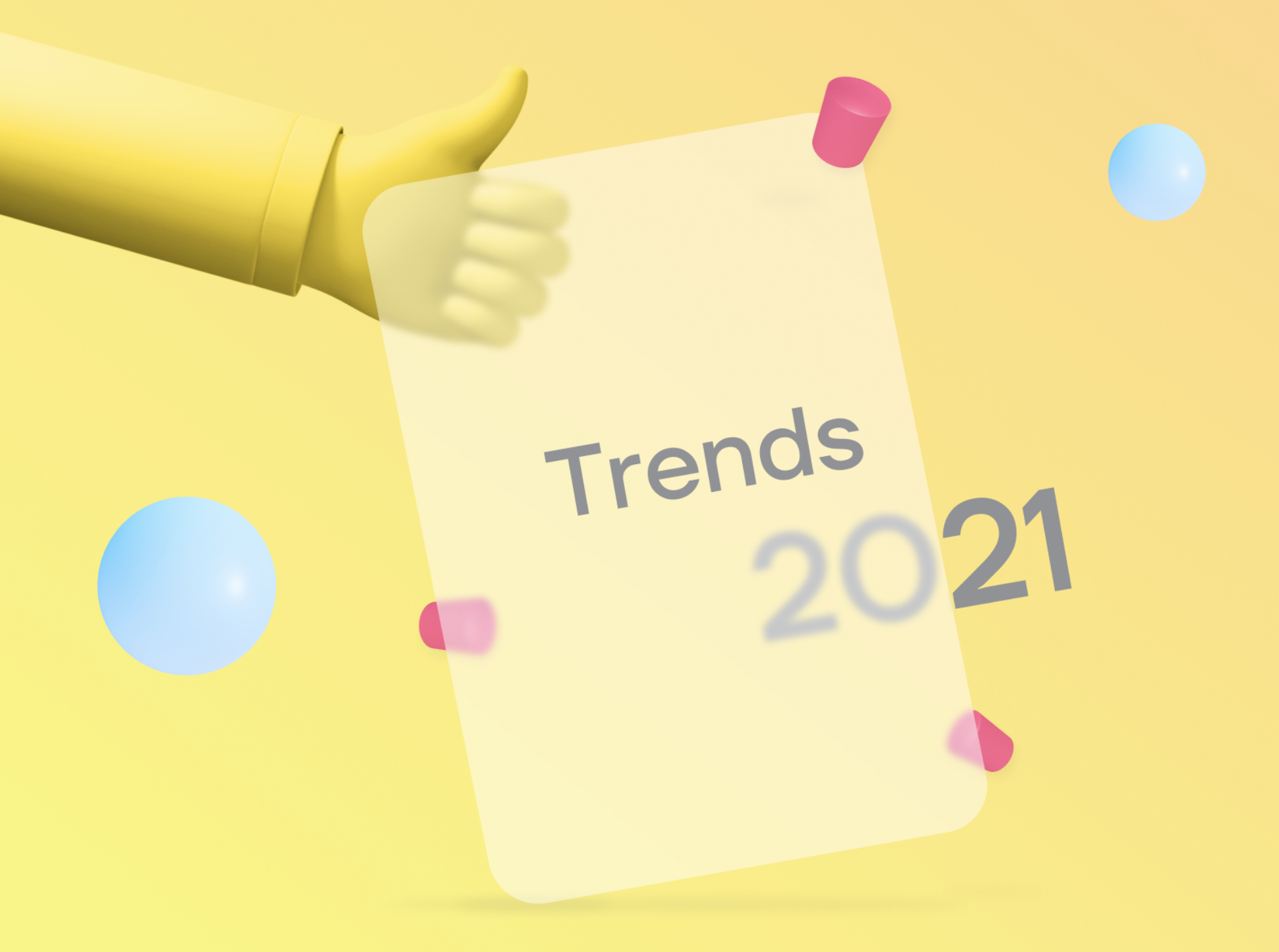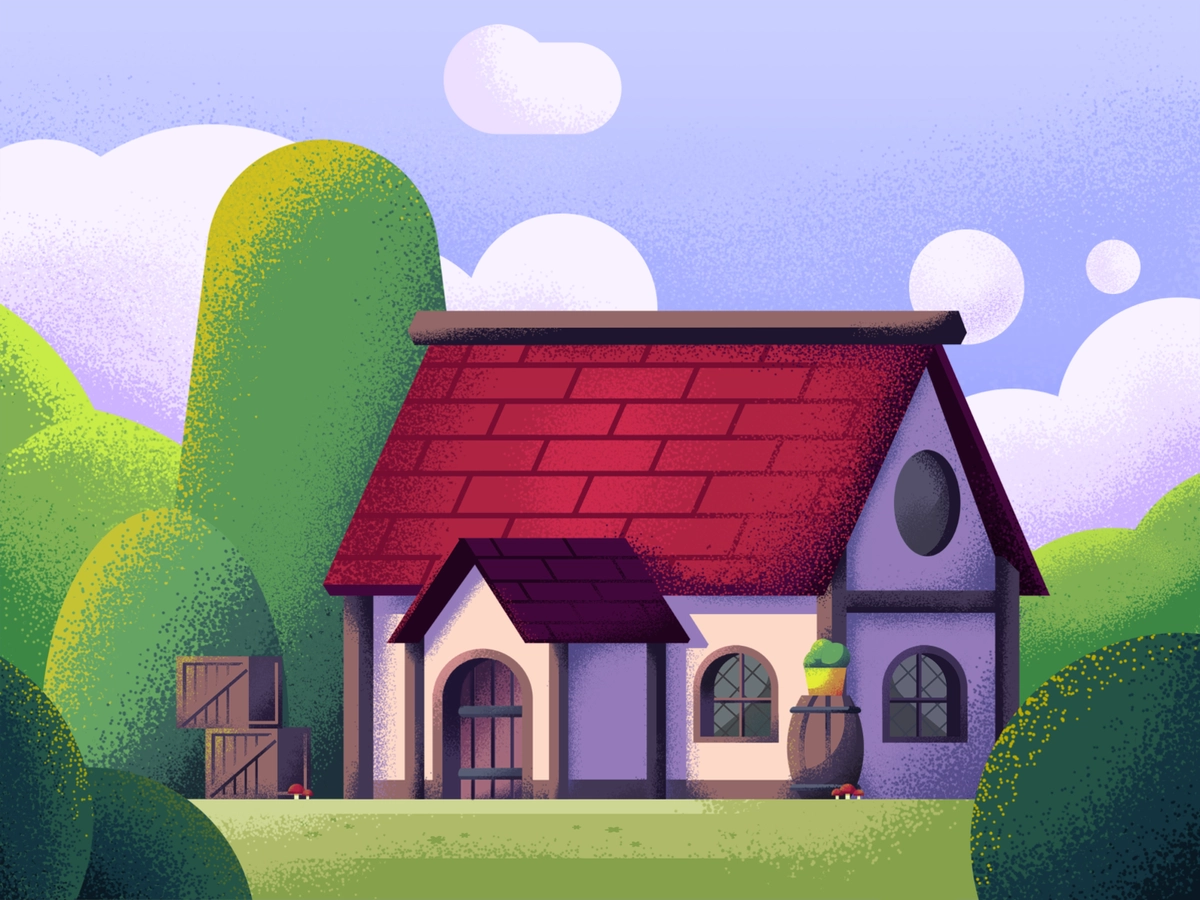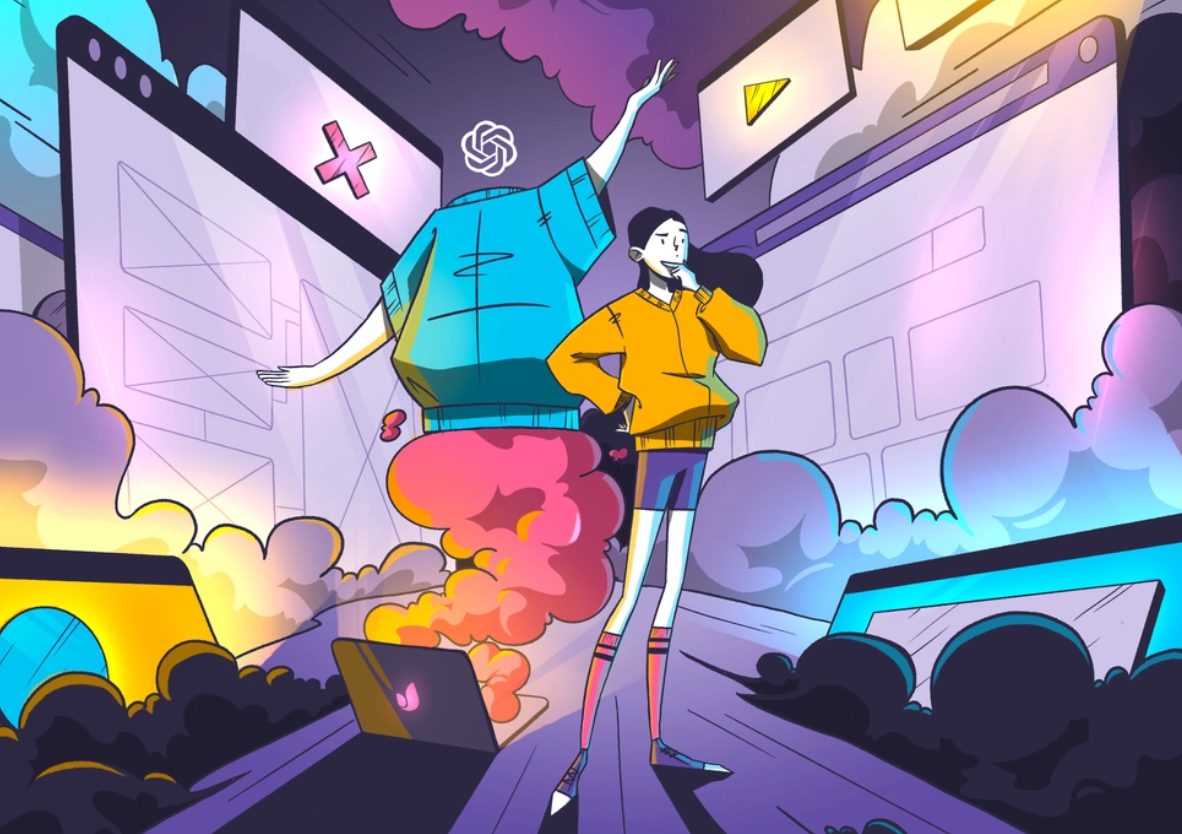New Year Edition: Top UX/UI Design Trends Rushing to Us in 2022
We don’t claim we predict the future of UX design. We’ll just look into a peephole to see what awaits us behind the door of 2022.
The Earth is now completing the full orbit around the Sun and going to enter the new year. We all have experienced events that will leave nobody the same as before. Things across different industries have changed, as well as the design for mobile and digital web experiences.
The voice tech innovations flashed a new understanding of how the user wants to interact with digital products. The full-screen interaction, voice commands, low contrast gradients, a lot of animation, and more – we anticipate a lot of new amazing digital trends in the upcoming year. Just like a phoenix, the UX design is now striving to be reborn in our minds into something even more exciting and breathing with the innovation of 2022.
How will UX design change? Join our discussion about the top trends to learn more about it.
Motion Graphics: Design That Breathes with Dynamics
The animation is still breathing dynamics into user interfaces in the upcoming year. Contemporary users consume increasingly more information in digital space. They don’t want to spend time reading bad-structured texts without relevant visuals. People prefer information spiced up with animation and unobtrusive micro-interactions. These techniques turn data into better-digestible content, facilitate comprehension, and make the user interface feel more natural.
Consequently, we expect to see the rise of website animation, new dynamic effects, and mobile interactivity. In-app and site motion graphics will amaze us by its “intelligence.” It will react to the user interactions and will help navigate the UI.
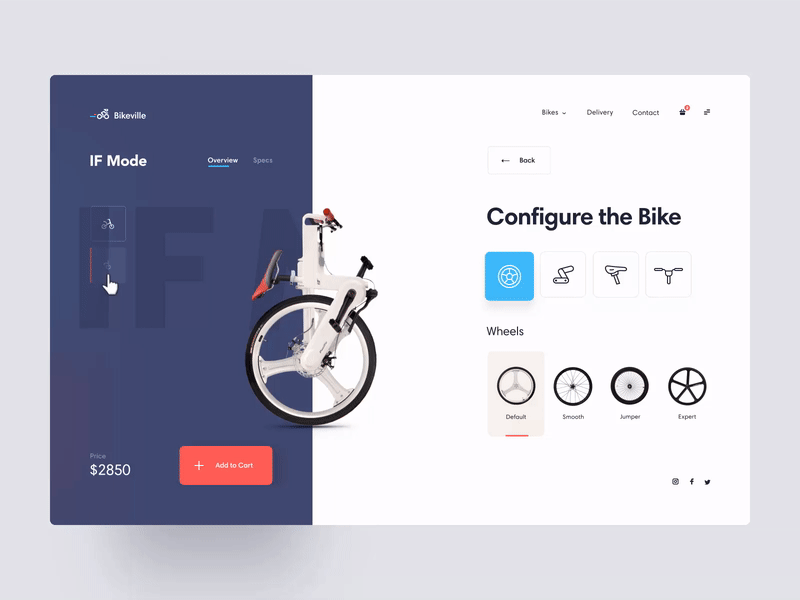
In 2022, motion graphics will transform the UX by…
- attracting attention to what should be done or what will happen next
- creating fluid and visually pleasant transitions
- bringing aesthetical delight to users
- guiding us through complicated operations
- confirming actions during the user journey.
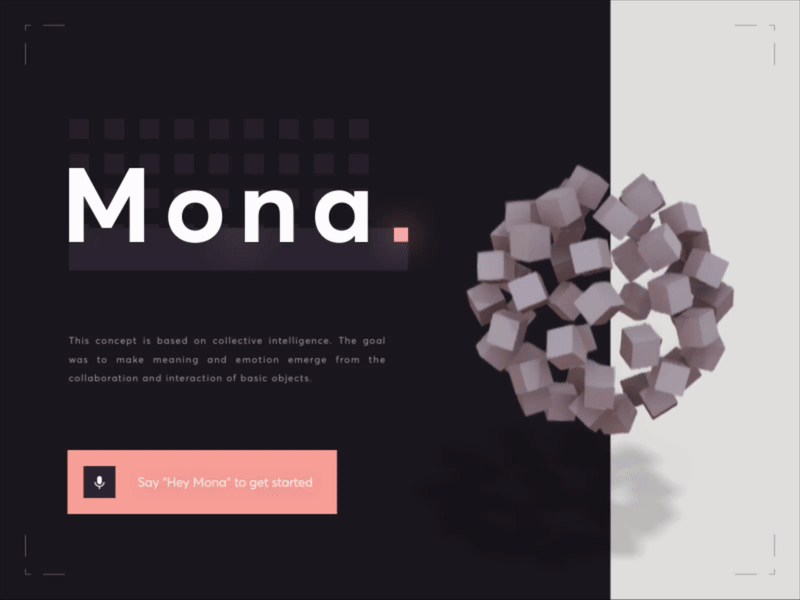
Voice Innovations: Even Louder and More Amazing Than Before
Users are becoming more and more bored with the usual touchable screens. They want alternative interfaces allowing them to control devices with voice. The opportunity to interact with digital experiences via voice commands opens new horizons of user-product relationships and daily operations, making them much more convenient and natural. Voice-driven user interfaces are the next step in UX design.
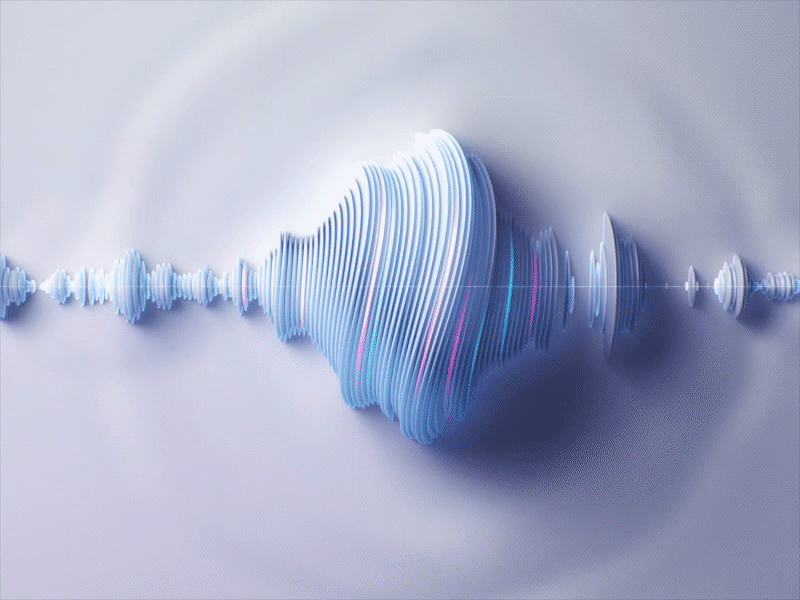
Voice tech brings us even more convenience. However, it doesn’t mean that it extends our comfort zone. On the contrary, it allows us to step outside our many-year digital habits and try something completely different. Yes, it’s more convenient, but it’s also more disruptive for most of us at the same time.
Realistic Textures: So Real That You Want to Touch Them

Users don’t love sleek and pixel-perfect mobile app design and web design as before. Today, people want a pinch of something authentic, realistic, and even “raw.” Thus, realistic textures are becoming even more trendy in 2022. We will see them on the website backgrounds, mobile UI design elements, and other digital platforms.
In 2020, the flat design has been taking over. On the contrary, the perfection of vector design takes a backseat while realistic textures are gaining popularity in 2022. This year, we’re going to meet more “organic-looking” digital designs that bring us back to the roots, instincts, and offline-like interactions.
Full-Screen Performance
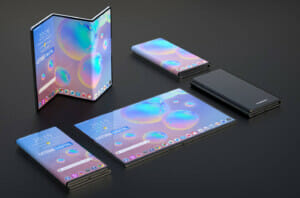
New designs for new mobile devices will likely surprise us with immersive full-screen performance. Every year the screen sizes are getting bigger, while the user’s attention spans are becoming shorter all the time. The only chance to grab the user’s attention and avoid the increase in bounce rates is by making an immersive interface. It will open a whole new world of digital interactions that are free from distractions and a lot of limitations.
We used to see notification bars on the top. That’s just one of many distractions that full-screen overcomes. We also anticipate the begging of the new era of foldable devices in 2022. Foldable mobile devices are another vast area for the evolution of full-screen displays.
Dark Mode: We Still Love The Dark
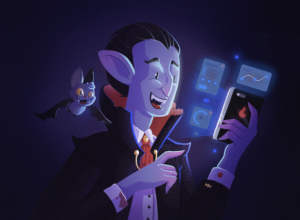
What to do, people still love the Dark. Sure, we mean the Dark Mode, one of the biggest UI/UX trends in the upcoming year. Dark UIs are usually modest, elegant, stylish. They make intrigue and add charm to a digital product.
What to do, people still love the Dark. Sure, we mean the dark mode, one of the biggest UI/UX trends in the upcoming year. Dark UIs are usually modest, elegant, stylish. They make intrigue and add charm to a digital product.
Some of the users find them less distracting than light mode designs. Moreover, some people also say they feel that the dark mode reduces eye strain and provides more aesthetical satisfaction from the product. Among its key advantages is the ability to prolong battery life, enhanced accessibility, and the ease of hiding defective pixels.
Read more cool insights about dark mode design in this article.
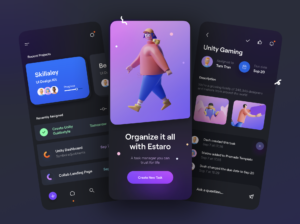
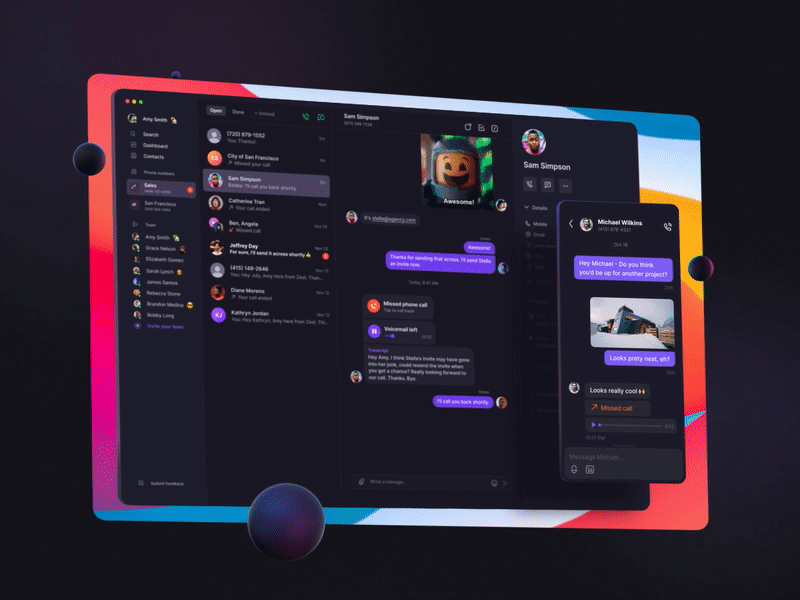
Biometrics: Safer and Passwordless Digital Life
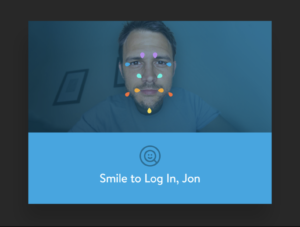
We all live in a world of cyberattacks, unfortunately. That’s the undeniable truth interrupting our lives with hacks of bank accounts, leakage of corporate data, and illegal use of information about customers. Cybersecurity is a required trend. As one of the most effective security strategies, biometric technology allows protecting our data and devices. Although fingerprints, facial recognition, and voice identification aren’t new trends, they still are popular in user experience design in 2022.
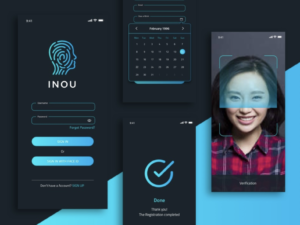
Hyperrealistic 3D Elements: The Trend Inspired by VR
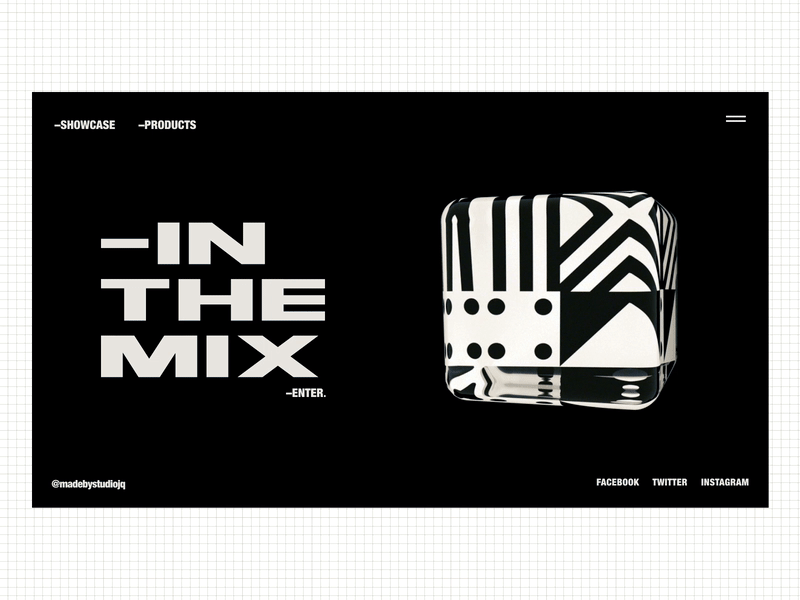
Many businesses have been using AR and VR technologies in user experiences. It has inspired the next UI design trend — hyperrealistic 3D elements. This tactic blurs the line between the digital world and reality. The 3D design makes the user experience even more engaging, attractive, and informative. An excellent example is the 360-view allowing users to watch the full picture and get a more comprehensive understanding of things or processes.
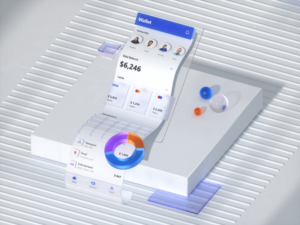
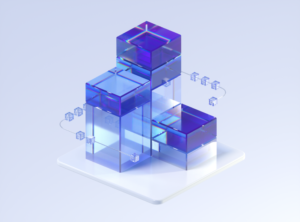
The Future? Today’s Dream Implemented into Digital
“The future belongs to those who believe in the beauty of their dreams.” — Eleanor Roosevelt
Hopefully, these trends will inspire you to bring your “dreams” into reality and implement them as exciting digital products that blow the mind with their innovation.
The article first appeared on Muzli.


